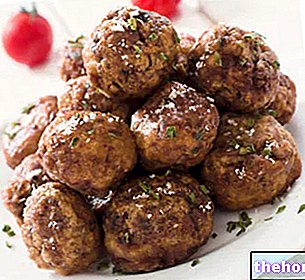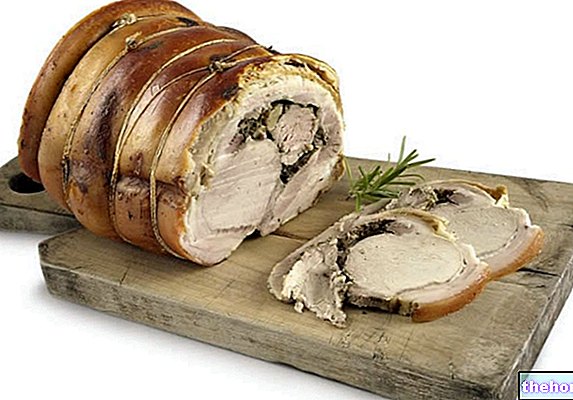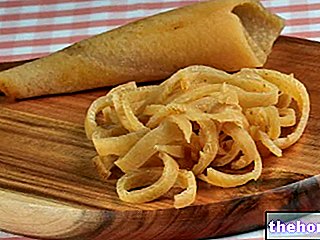Generality
Chicken curry is a typically Asian ethnic recipe, although it boasts many regional and national interpretations. In fact, the variations of chicken curry are as many as the places where the two main ingredients are spread: chicken and curry.

While chicken, for better or worse, remains a constant in the recipe, curry, the other spices and vegetables that compose it represent variables that differentiate many formulas.
Curry is a spice - or rather a mixture of spices and aromas - typically Indian; its basic composition includes: coriander, turmeric, black cumin, sometimes saffron, cayenne pepper, ginger, mustard, cardamom, tamarind and ginger.
In its places of origin, curry has an "importance very similar to that of" pasta "for Italians; therefore, in a completely similar way, there are countless types. Trying to simplify the classification of this food as much as possible, we it could be divided into three commercial forms: mild, hot and very hot (which differ in the degree of spiciness).
Notes on Ingredients
As anticipated, the recipes to prepare chicken curry are really many. Below we will make a brief overview of the most popular ingredients, in order to favor readers' orientation to the formula that is closest to personal tastes.
Seasoning grease: contrary to what one might believe, the seasoning fat originally used for this recipe is ghee, or clarified butter (deprived of water and protein). In China, seed oil is mainly used, while in South America and Africa that of palm. It goes without saying that, by using the extra virgin olive oil, a considerable nutritional advantage would be gained; however, the final flavor would be compromised, which is why it is advisable to use an oil with the most delicate taste possible.
Chicken: although the modern recipes of chicken curry foresee the use of the breast, originally, the whole body was used (divided into four or eight parts), including the skin. Here the chicken curry can be interpreted in two almost opposite ways: as a buffet recipe (to be eaten comfortably standing up, with only the use of a fork), or as a dish that requires the use of a knife and possibly also some hands, to carefully strip the bones of the animal; obviously, the cooking times of the two types are quite different (much longer for the one with whole chicken in pieces).
Curry: without going into detail, the distinction made above applies: mild, hot and very hot.
Vegetables: the vegetables in chicken curry can be the most diverse. Typically, contemporary recipes mention: onion, carrots, peppers (red and green), tomatoes, eggplant and zucchini. All vegetables must be carefully washed and cleaned; onions and tomatoes, even peeled.
Fruit: fruit for chicken curry is considered the most bizarre category of ingredients; it is a group of foods that, in Italian gastronomy, is rarely associated with savory dishes. In particular, “renette” apples are preferred in chicken curry.
Some also use lemon, both zest and juice. More niche, on the other hand, is the coconut, of which the shelled and peeled white pulp is blended and soaked; the infusion water should not be eliminated, but used to wet the chicken during long cooking (as if it were broth).
Spices, herbs and other aromas: it is by far the most heterogeneous category; in the simplest recipes are added: black pepper, garlic, bay leaf, chilli, mustard seeds, cumin, tarragon, cardamom and sometimes parsley. However, by carrying out more in-depth research, it is possible to find many products of Asian origin also quite curious.
Cooking liquid: often, the water released by the ingredients is not enough to complete the cooking of the chicken curry. To continue the heat treatment, some use only hot water, some others the broth or coconut soaking water; personally, I believe that a light chicken base made from the bones and a bit of animal cuttings (slightly thickened with rice flour or potato starch), may be the most suitable solution.
NB. Chicken curry is often served with boiled rice, preferably cooked in style pilaf.
For more information on the preparation process, see Alice's video recipe.

Nutritional Characteristics
By carefully reading what has been written so far, the heterogeneity in the chemical-nutritional composition of the various recipes should be clear.
A "simple" chicken curry, with little oil / butter and free of fatty ingredients such as chicken skin, coconut, etc., is an extremely light recipe, hypo or normo-lipid and low in calories.
On the contrary, by adding coconut and making significant use of seasoning fats, perhaps without removing the skin from the chicken, the recipe can become extremely energetic (up to almost 50% of the calories from lipids). The fatty acids of chicken curry can be predominantly monounsaturated, in the case in which the skinless breast is used, the extra virgin olive oil but without coconut, or tend to be saturated preferring butter, the animal with the skin and the addition of coconut.
Chicken curry is a meat-based dish, therefore it provides a good amount of high biological value proteins. As for carbohydrates, on the other hand, they play a minor caloric role and tend to consist of the fructose of vegetables and fruit; a small fraction could be of starch, respectively contained in the flour eventually used to bind the light bottom of the chicken.
The fibers are present but in quantities relative to the vegetables used. Regarding the cholesterol content, this varies according to the presence or absence of clarified butter and the skin of the animal.
Regarding vitamins, in chicken curry there are various molecules of group B, C (however degraded during cooking) and carotenoids (pro vitamin A). Speaking of mineral salts, however, the concentrations of potassium and iron stand out.
Chicken curry is known for the significant presence of various types of antioxidants, although most of these tend to be degraded due to the heat treatment to which the food is subjected.
The light version of chicken curry is suitable for most diets, with the exception of breastfeeding women; this is because the various aromatic components tend to pass into breast milk and sometimes worsen its palatability, compromising the infant's nutrition.
Video Recipe
Chicken with Curry - Bocconcini Light
Problems with playing the video? Reload the video from youtube.
- Go to the Video Page
- Go to the Video Recipes Section
- Watch the video on youtube
Other Foods - Amatriciana Meat Lamb - Lamb Meat Duck - Duck Meat Pork Chop Florentine Steak Boiled Broth Raw Meat Red Meat White Meat Beef Horse Meat Rabbit Meat Pork Meat Vegetable Meat Lean Meat Sheep and Goat Meat Carpaccio Ribs Cotechino Cutlet Snails or land snails Pheasant and Pheasant meat Guinea fowl - Guinea fowl meat Pork fillet Chicken Hamburger Hot Dog Kebab Patè Chicken breast Turkey breast Chicken - Chicken meat Meatballs Porchetta Quail - Quail meat Ragù Sausage Game Zampone OTHER ARTICLES MEAT Categories Food Alcoholic Meat Cereals and derivatives Sweeteners Sweets Offal Fruit Dried fruit Milk and derivatives Legumes Oils and fats Fish and fishery products Salami Spices Vegetables Health recipes Appetizers Bread, Pizza and Brioche First courses Second courses Vegetables and Salads Sweets and Desserts Ice creams and sorbets Syrups, liqueurs and grappas Preparations of Basic ---- In the Kitchen with Leftovers Carnival Recipes Christmas Recipes Diet Recipes Light Recipes Women's Day, Mom, Dad Functional Recipes International Recipes Easter Recipes Recipes for Celiacs Recipes for Diabetics Recipes for Holidays Recipes for Valentine's Day Recipes for Vegetarians Recipes Protein Regional Recipes Vegan Recipes




























